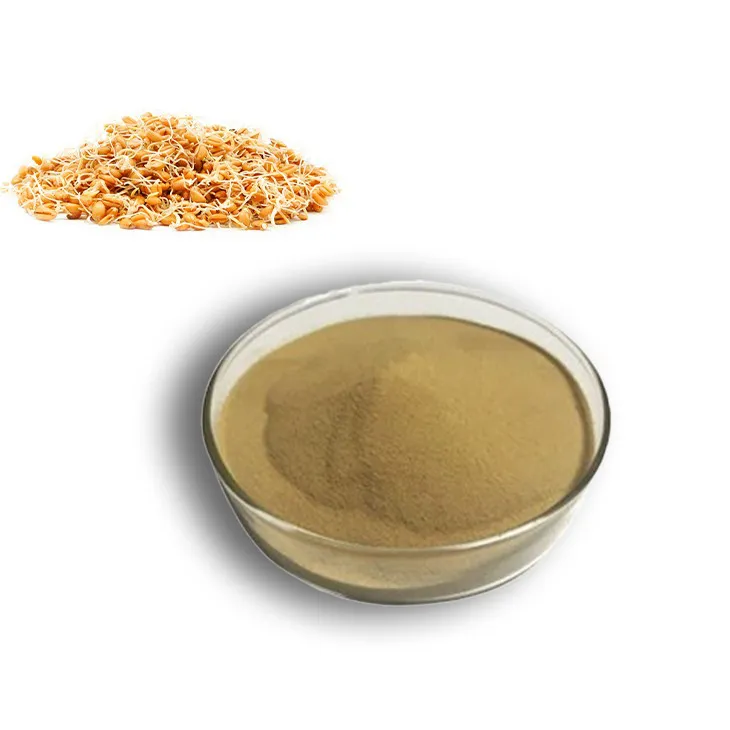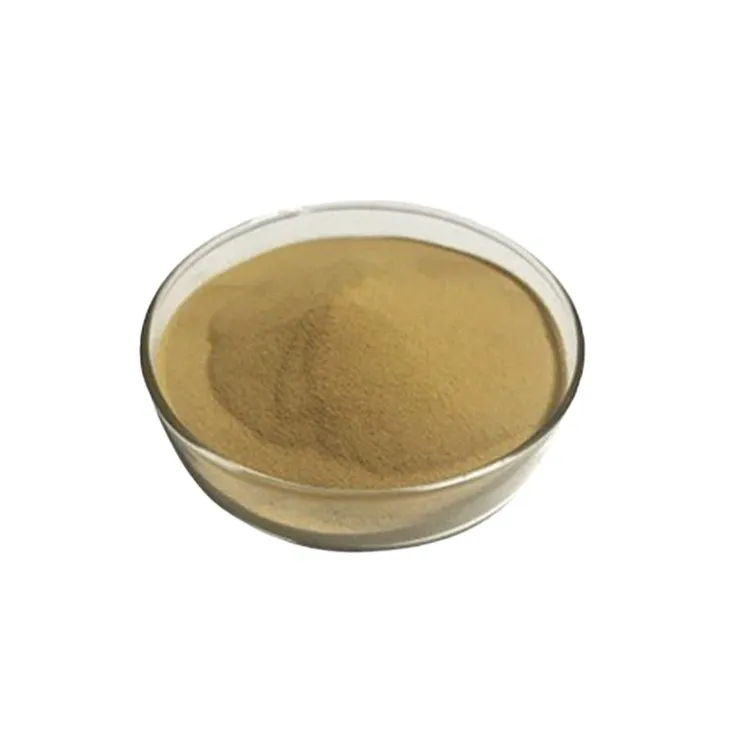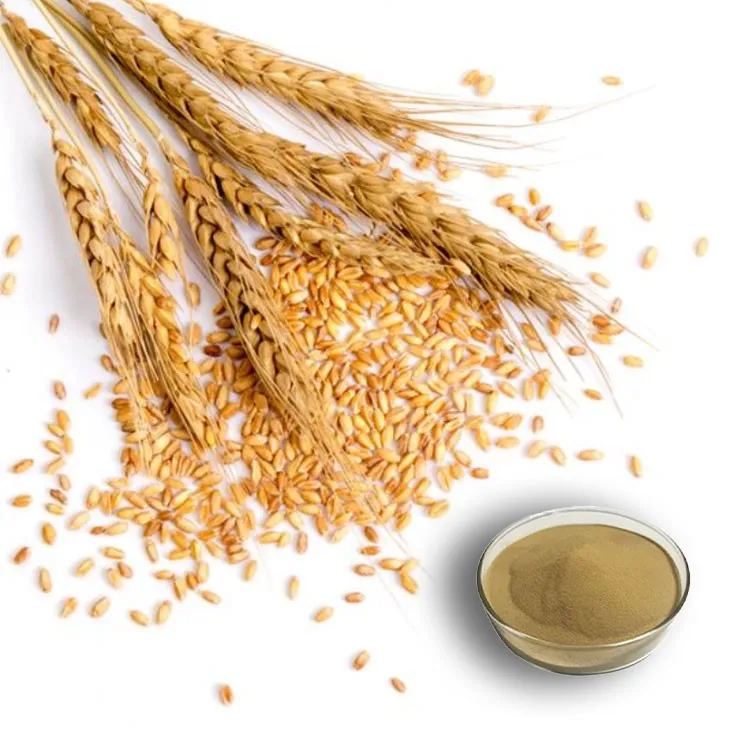- 0086-571-85302990
- sales@greenskybio.com
Manufacturers of wheat germ extract.
2024-11-27

Introduction to Wheat Germ Extract
Wheat Germ Extract is a highly valuable product within the health and nutrition industry. It is derived from wheat germ, which is the embryo of the wheat kernel. This small part of the wheat is a treasure trove of essential nutrients. It contains vitamins, such as vitamin E which is a powerful antioxidant. Minerals, proteins, and healthy fats are also present in significant amounts. These nutrients make Wheat Germ Extract a popular ingredient in various products, from dietary supplements to functional foods and cosmetics.

The Role of Manufacturers
Manufacturers of wheat germ extract are central to the process of bringing out the potential of this valuable resource. They are responsible for taking the raw wheat germ and transforming it into a usable and beneficial extract.
These manufacturers need to have a deep understanding of the properties of wheat germ and the extraction process. They also have to keep up with the latest industry trends and consumer demands, which are constantly evolving, especially in the areas of health and nutrition.

Sourcing of Wheat Germ
Quality of the Source
Manufacturers typically start with high - quality wheat germ sourced from reliable suppliers. High - quality wheat germ is the foundation for producing a good wheat germ extract. The quality of the wheat germ can be affected by factors such as the type of wheat, the growing conditions, and the harvesting methods.
Suppliers are carefully selected based on their reputation for providing consistent and pure wheat germ. This is crucial as any contaminants or low - quality wheat germ at this stage can lead to problems in the final product.
Types of Wheat Germ
There are different types of wheat germ available, depending on the variety of wheat from which it is sourced. Some wheat varieties may be more suitable for certain applications or may have a different nutrient profile. Manufacturers need to be aware of these differences and choose the type of wheat germ that best suits their production needs.

Extraction Techniques
Solvent Extraction
One common method used by manufacturers is solvent extraction. In this process, solvents like hexane are used to separate the oil - rich fraction of the wheat germ, which contains many of the nutrients. Solvent extraction is a well - established method and can be very effective in isolating the beneficial components of the wheat germ.
However, there are some challenges associated with solvent extraction. The use of solvents may leave behind trace amounts in the final product, which could be a concern for some consumers. Also, the disposal of the solvents needs to be managed carefully to avoid environmental pollution.
Modern and Environment - Friendly Methods
To address the concerns related to solvent extraction and meet the increasing demand for clean - label products, more modern and environmentally - friendly methods are being developed. These methods aim to extract the nutrients from the wheat germ without the use of harsh solvents or in a more sustainable way.
For example, some manufacturers are exploring enzymatic extraction methods. Enzymes can be used to break down the cell walls of the wheat germ and release the nutrients in a more natural way. Another approach is supercritical fluid extraction, which uses substances like carbon dioxide in a supercritical state to extract the desired components. This method has the advantage of being relatively clean and leaving no solvent residues in the final product.

Quality Control in Manufacturing
Purity Testing
Quality control is of utmost importance in the manufacturing process of wheat germ extract. Reputable manufacturers test for purity at every stage. Purity testing involves checking for the presence of any foreign substances or impurities that may have entered during the extraction process or from the source of the wheat germ.
For example, they test for the presence of other plant materials that may have been accidentally included during the harvesting or processing of the wheat germ. Any such impurities can affect the quality and effectiveness of the final product.
Potency Testing
Potency testing is another crucial aspect of quality control. Manufacturers need to ensure that the wheat germ extract contains the right amount of the beneficial nutrients. For example, they test for the levels of vitamins, minerals, and proteins in the extract. This is important as the effectiveness of the wheat germ extract in various applications, such as dietary supplements, depends on its nutrient content.
If the potency of the extract is not as expected, it may not provide the desired health benefits to consumers. Therefore, manufacturers use advanced analytical techniques to accurately measure the potency of the extract.
Safety Testing
Safety testing is essential to protect consumers. Manufacturers ensure that the final wheat germ extract product is free from contaminants such as pesticides, heavy metals, and mycotoxins.
Pesticide residues can come from the use of pesticides in the wheat fields during the growth of the wheat. Heavy metals may be present in the soil where the wheat is grown and can be absorbed by the wheat germ. Mycotoxins are produced by fungi that may infect the wheat during storage or under certain environmental conditions. Testing for these contaminants and ensuring their absence in the final product is crucial for the safety of consumers.
Applications of Wheat Germ Extract
Dietary Supplements
Wheat germ extract is widely used in dietary supplements. Due to its rich nutrient profile, it can be a valuable addition to supplements aimed at providing various health benefits. For example, the vitamin E content can help in antioxidant protection, which may reduce the risk of chronic diseases caused by oxidative stress.
The proteins and other nutrients in the extract can also support overall health and well - being. Many dietary supplements on the market today contain wheat germ extract as a key ingredient, often combined with other beneficial substances.
Functional Foods
In the realm of functional foods, wheat germ extract is used to enhance the nutritional value of food products. It can be added to breakfast cereals, energy bars, and other food items. By adding wheat germ extract, food manufacturers can market their products as being more nutritious and health - promoting.
For example, in breakfast cereals, the addition of wheat germ extract can increase the vitamin and mineral content, making it a more balanced and healthy start to the day. In energy bars, it can provide a source of sustained energy due to its protein and healthy fat content.
Cosmetic Industry
The use of wheat germ extract in the cosmetic industry is also on the rise. Its antioxidant properties, especially from the vitamin E, can be beneficial for skin health. It can be used in creams, lotions, and other skin care products to help protect the skin from damage caused by free radicals.
Wheat germ extract may also have moisturizing properties due to its healthy fat content. This can help in keeping the skin hydrated and looking healthy. In addition, some cosmetic products use wheat germ extract for its potential anti - aging effects, as it may help in reducing the appearance of wrinkles and improving skin elasticity.
Challenges Faced by Manufacturers
Meeting Regulatory Requirements
Manufacturers of wheat germ extract face the challenge of meeting regulatory requirements. Different countries and regions have different regulations regarding the production, labeling, and marketing of food and dietary supplements. For example, some regions may have strict limits on the levels of certain nutrients or contaminants in the product.
Manufacturers need to stay updated on these regulations and ensure that their products comply with all the relevant requirements. This may involve additional testing and documentation, which can increase the cost and complexity of the manufacturing process.
Cost Management
Cost management is another significant challenge. The production of wheat germ extract involves various costs, including the cost of sourcing high - quality wheat germ, the cost of extraction techniques (especially the more modern and environmentally - friendly ones which may be more expensive), and the cost of quality control testing.
At the same time, manufacturers need to remain competitive in the market. They need to find ways to balance the cost of production with the quality of the product and the price that consumers are willing to pay. This often requires careful cost - cutting measures without sacrificing quality.
Consumer Perception and Marketing
Consumer perception also plays a role in the challenges faced by manufacturers. Some consumers may have concerns about the use of solvents in the extraction process, even if the final product is within safe limits. Manufacturers need to address these concerns through effective marketing and communication.
They also need to differentiate their products from competitors in a crowded market. This requires effective branding and marketing strategies that highlight the unique features and benefits of their wheat germ extract products.
Future Outlook for Wheat Germ Extract Manufacturers
The future for wheat germ extract manufacturers looks promising, but also full of challenges. With the growing awareness of health and nutrition, the demand for products containing wheat germ extract is likely to increase.
Manufacturers will need to continue to innovate in their extraction techniques to meet the demand for clean - label and high - quality products. They will also need to work closely with suppliers to ensure a stable and high - quality source of wheat germ.
As the regulatory environment continues to evolve, manufacturers will need to be proactive in adapting to new requirements. And in the face of competition, they will need to focus on building strong brands and effective marketing strategies to reach consumers.
FAQ:
1. What are the main nutrients in wheat germ extract?
Wheat germ extract is rich in essential nutrients. It contains vitamins (such as vitamin E, which is a powerful antioxidant), minerals, proteins, and healthy fats.
2. How do manufacturers source wheat germ for extraction?
Manufacturers typically source high - quality wheat germ from reliable suppliers.
3. What is a common extraction method for wheat germ extract?
One common method is solvent extraction, which uses solvents like hexane to separate the oil - rich fraction containing many of the nutrients.
4. Why is quality control important in the manufacturing of wheat germ extract?
Quality control is crucial because reputable manufacturers need to test for purity, potency, and safety at every stage. This ensures that the final product is free from contaminants such as pesticides, heavy metals, and mycotoxins, guaranteeing both its safety for consumers and its effectiveness for various applications in dietary supplements, functional foods, and the cosmetic industry.
5. Are there any new extraction methods being developed?
Yes, more modern and environmentally - friendly methods are being developed to meet the increasing demand for clean - label products.
Related literature
- The Production and Nutritional Benefits of Wheat Germ Extract"
- "Wheat Germ Extract: Manufacturing Processes and Quality Assurance"
- "Advanced Techniques in Wheat Germ Extraction for the Health Industry"
- ▶ Hesperidin
- ▶ citrus bioflavonoids
- ▶ plant extract
- ▶ lycopene
- ▶ Diosmin
- ▶ Grape seed extract
- ▶ Sea buckthorn Juice Powder
- ▶ Beetroot powder
- ▶ Hops Extract
- ▶ Artichoke Extract
- ▶ Reishi mushroom extract
- ▶ Astaxanthin
- ▶ Green Tea Extract
- ▶ Curcumin Extract
- ▶ Horse Chestnut Extract
- ▶ Other Problems
- ▶ Boswellia Serrata Extract
- ▶ Resveratrol Extract
- ▶ Marigold Extract
- ▶ Grape Leaf Extract
- ▶ blog3
- ▶ blog4
-
Organic Non - GMO Camu - Camu Fruit Extract.
2024-11-27
-
Nature's Bounty Copaiba Extract.
2024-11-27
-
The pure L - carnitine most worth buying.
2024-11-27
-
The best organic quercetin.
2024-11-27
-
Nature's Bounty Vitamin K2
2024-11-27
-
Troxerutin
2024-11-27
-
Calendula Extract
2024-11-27
-
Eucommia Ulmoides Extract
2024-11-27
-
Elderberry Extract
2024-11-27
-
Hawthorn Extract
2024-11-27
-
Angelica sinensis extract
2024-11-27
-
Moringa powder
2024-11-27
-
Citrus bioflavonoids
2024-11-27
-
Marigold Extract
2024-11-27
-
Apricot Powder
2024-11-27





















